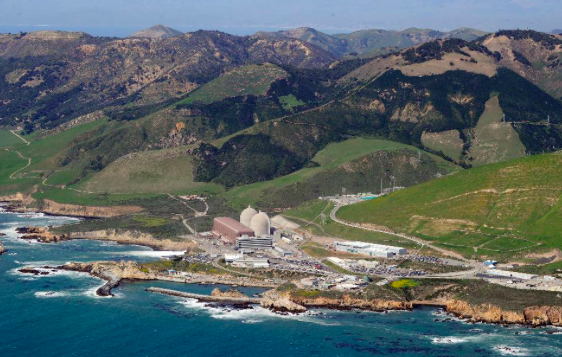NEWS Nuclear Plant ‘Doesn’t Fit’ In The Future Grid, Utility Executive Says
From Forbes Magazine, December 7, 2016
Pacific Gas & Electric Co. decided to close its Diablo Canyon Nuclear Power Plant because its baseload power—often cited as nuclear’s best asset—doesn’t fit into the dynamic grid California is developing, a PG&E executive said today at the U.S. Energy Storage Summit in San Francisco.
Steve Malnight, PG&E’s senior vice president for regulatory affairs, was speaking specifically of market conditions in California, but many consider California a trailblazer for the nation on energy and climate issues, so his comments will resonate in the ongoing debate over nuclear’s role in a clean-energy future.
“Considering a shutdown was a difficult decision for us,” Malnight said, “but as we really looked at the changing dynamics in California, given the choices we’ve made in California, and the policy direction in California, there was a clear recognition that Diablo was not going to be a good fit for the future needs of the system.”
Figure caption: Aerial view of the Diablo Canyon Nuclear Power Plant, which sits on the edge of the Pacific Ocean at Avila Beach in San Luis Obispo County, California. (Photo by MARK RALSTON/AFP/Getty Images)
Nuclear advocates argue that nuclear plants can provide reliable power to balance the variability of renewables, but baseload power turned out to be Diablo’s Achilles’ heel.
“With 50 percent renewables on the system, the idea of a large baseload generator that runs pretty much all the time, every day, 24 hours a day, just doesn’t have as good a fit to the market conditions we expect to see,” Malnight said.
PG&E announced this summer it would close Diablo’s two reactors after their operating licenses expire in November 2024 and August 2025, replacing the plant with a suite of greenhouse-gas-free technologies, including renewables, energy efficiency, and energy storage. Today, Malnight said half that job is already done.
“When you looked at the other half that needed to be replaced, baseload generation just wasn’t a good fit. The plant would be turning on and turning off all the time. And in a marketplace with really abundant resources in the middle of the day, that’s not a good way to run a nuclear plant.”
PG&E intends to “buy” the renewables, efficiency, and storage that will replace the plant soon, so that they’re in place before it closes. He told the audience of energy-storage interests that the storage purchase would have been necessary even if Diablo stayed open.
“We anticipate we’re going to need to bring on more storage onto the system to help integrate those diverse resources. Which, by the way we would have needed if we kept Diablo running, too.”
Malnight did acknowledge the seeming irony of closing a nuclear plant during a frantic quest to develop an energy system free of carbon emissions.
“As a company we’re really committed to achieving the state’s—and hopefully the world’s—ambition for carbon reduction, and Diablo is a vital resource for us today in our existing fleet for how we are able to deliver as much clean energy as we do.” But, he said, it proved too awkward a piece of the puzzle in an energy future based on a diverse, dynamic, decentralized set of resources.
PG&E’s decision supports an argument articulated by Berkeley Energy Professor Daniel Kammen in a debate this summer [to watch the debate, click here] with former Energy Secretary Steven Chu: “The dramatic ramp up in solar resulted in the dramatic realization that a diverse, decentralized system can provide the same critical features that we think about with a baseload highly centralized system,” said Kammen.

You must be logged in to post a comment.